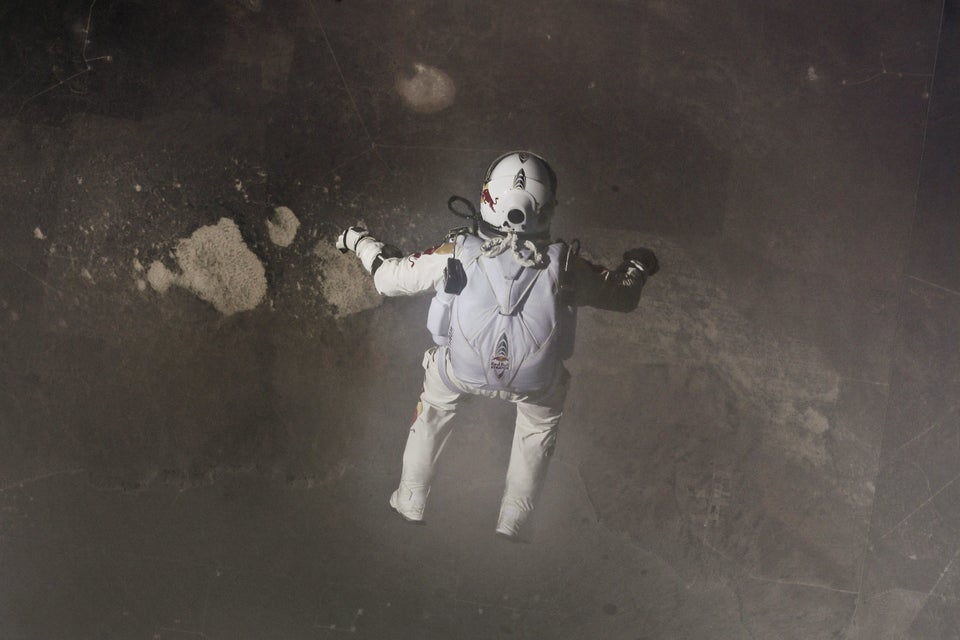
Plans call for Felix Baumgartner to be alone when he attempts to set a new world record for high-altitude skydiving, leaping from a huge helium balloon at 120,000 feet and then plunging back to Earth at supersonic speeds.
But in the long run-up to the daredevil stunt--now scheduled to take place over Roswell, N.M. early on Tuesday, Oct. 9--the Austrian parachutist has had lots of company.
In fact, Baumgartner is just the most visible member of a team operating under the Red Bull Stratos moniker.
Who are 'Fearless Felix's" teammates? The headliner is Joe Kittinger, a retired Air Force colonel who currently holds the record for highest parachute jump (102,800 feet, set on Aug. 16, 1960). In addition, the team includes designers, engineers, a medical doctor, and a weather expert.
And then there's Luke Aikins, a professional skydiver with more than 16,000 jumps under his belt. Exactly what does Aikins do in his role as the team's "skydiving consultant?" Here's what the Red Bull Stratos website says:
Whether he's suggesting a new parachute configuration, innovating drogue deployment or determining optimal flight postures, Luke is the test subject for the mission team, willingly throwing himself into worst-case scenarios. He also works one-on-one with Felix during intensive airborne training sessions... Luke's efforts behind the scenes give Felix time to focus on preparations such as pressure-suit fittings and training with capsule instrumentation. In evaluating aspects such as how the position of an oxygen canister or camera will affect Felix's center of gravity, and in skydiving with Felix to assess his technique.
In an effort to gain a better understanding of his role in the stunt--as well as of some of the specific challenges facing Baumgartner and the team--HuffPost Science emailed Aikins a set of detailed questions. Here are his replies, with minor edits:
- What's been the biggest challenge in preparing for the jump? Weather and communication between all the different teams and people involved in this project.

